How Does It Work?


Step 1: Craft Your Mandate
You can define mandates using any of the following tools:
- LLM Interface: Describe your rules in natural language
- Saline UI: Use the drag-and-drop editor or select from a template library
- SDK: Define complex, programmatic mandates in Python
Step 2: Submit On-Chain
Once created, your mandate is submitted as a transaction to the blockchain.
It gets installed directly on the asset, not on a smart contract or wallet.
Your asset is now protected. Every future transaction must comply with this mandate.
Step 3: On-Chain Enforcement
Any agent — whether it’s a person, a script, or an AI — can attempt to submit a transaction involving your asset.
When they do, validators check:
Does this transaction match the logic defined by the mandate?
- If yes, the transaction is approved
- If no, it is automatically rejected
There is no smart contract execution involved.
Validators simply verify logic. No gas-heavy computation. No expensive virtual machines.
Just pure, rule-based verification — fast, cheap, and secure.